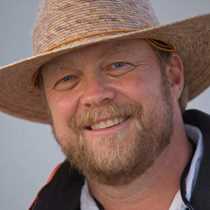In the Land of the Ice Bears, Svalbard Archipelago
Early this morning we awake to find fin whales plying the calm seas of Hinlopen Strait. From the deck we hear the explosive sound of their blows, as guillemots and kittiwakes streak past the National Geographic Explorer at eye level. The whales and seabirds are here for the same thing – food. It’s high summer in the arctic, and the animals have migrated to high latitudes to take advantage of the cold productive waters that surround the Svalbard Archipelago. Fin whales are second in size only to the blue whale, and are still considered endangered from the intensive hunting centuries ago. We are lucky to see them and consider it a good indication that they are making a comeback.
After breakfast, we take the ship to explore the far reaches of Wahlenberg Fjord, a long arm of the sea carved into the west coast of Nordhaustlandet by ice age glaciers. Remnants of these glaciers still remain. In fact, Nordhauslandet is covered by not one, but two large icecaps, the second being the third largest in the world after Antarctica and Greenland. Pushing past icebergs calved from tidewater glaciers we reach the face of Bodley Glacier where the white whales – belugas – magically appear from the dark, murky waters. Being a small whale with secretive habits, we enjoy this rare sighting despite the bone-chilling north wind.
This afternoon we dress for the weather and venture ashore to explore the tundra. The hillsides are chock full of fossils from the Paleozoic era when the land that would become Svalbard was far to the south near the equator 250 million years ago. We find well-preserved fossils of brachiopods, corals, and crinoids from the warm, tropical seas during the Permian. Among the rocks are an amazing variety of tundra wildflowers, including arctic poppies, tufted, purple, and bog saxifrage, and also the rare spider plant. Also among the rocks was an interesting feature called pattern ground, consisting of circles and polygons arranged on the tundra by freeze/thaw processes associated with permafrost. Toward the end of the landing was the discovery of the day – a dead polar bear cub with a complete skull lying on the tundra. We do not know what killed this young bear but take it as a reminder that life in the far north can be harsh and it hangs in a delicate balance, will all things interconnected in ways we still do not totally understand.
It’s been a long and wonderful day, but the day is not yet over. Ahead of the ship is Cape Fanshawe, and the great bird cliffs of Alkefjellet. Just after dinner the ship makes a close approach not once but twice. The birds whiz by us, coming and going from the cliff in what appears to be orderly chaos. It’s a visual overload, overwhelming our senses with sights and sounds, and also aromas of biologic productivity. What a highlight to witness such a wild place – an amazing end to an amazing day.




